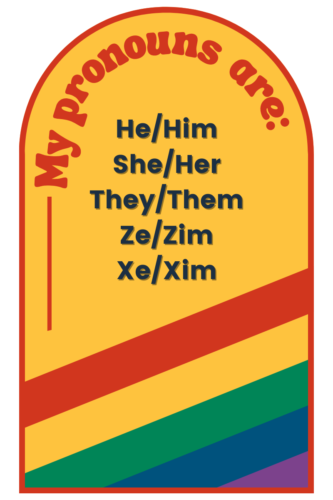While EEOC and OFCCP have yet to include non-binary gender options in their reporting and processes – despite announcing back in April that these options are coming – gender pronouns remain a crucial part of any inclusion strategy and a clear way to show acceptance and understanding of your LGBTQIA+ employees. Unfortunately for many, knowing how to use these terms properly can be complex and confusing. In this post, we will dive into the differences between sex, gender expression, sexual orientation, gender identity, and various gender pronouns, as well as tips for using pronouns in a respectful manner while in the workplace.
Sex
Sex, typically assigned at birth, refers to a person’s physical characteristics based on anatomical and physiological markers, including X and Y chromosomes. Two common sex types include male and female, but individuals may not distinctly fall into either category, known as intersex.
Gender Expression
Gender expression refers to the way a person embodies or demonstrates their gender outwardly through how they act, dress, behave, interact, or other perceived characteristics. Society identifies these cues as masculine or feminine, although what is considered masculine or feminine may change over time and varies by culture.
Sexual Orientation
 Sexual orientation refers to someone’s inherent romantic or emotional interest and attraction to other people. Sexual orientations include but are not limited to heterosexual, homosexual, and bisexual.
Sexual orientation refers to someone’s inherent romantic or emotional interest and attraction to other people. Sexual orientations include but are not limited to heterosexual, homosexual, and bisexual.
Gender Identity
Gender identity refers to how a person sees themselves in terms of their gender. It refers to a person’s own internal sense of self and gender, whether that is man, woman, neither, or both. Unlike gender expression, gender identity is not outwardly visible to others.
Gender Pronouns: What Are Those?
Gender pronouns are terms individuals choose to represent themselves. While we are most familiar with “he/him” and “she/her”, those who identify as gender-neutral or non-binary may prefer a different term. These may include (but are not limited to):
- they/them
- ze/zim (pronounced “zee”) may also be spelled xe/xim
- hir (pronounced “here”) is often used to replace her/hers/him/his/they/theirs
The list of gender pronouns is growing, some terms are now used less commonly than in the past, and some are dependent on where someone lives and the language they speak.
Properly Navigating Gender Identity in the Workplace
Using the correct gender pronouns is critical in the workplace. The proper use ensures your employees feel a sense of belonging, respect, and acceptance. Imagine being continuously called the wrong name at work. It’s almost sure to bother you and make you feel invalidated. After all, that’s who you are. The same goes for gender pronouns. Referring to someone with the correct gender pronoun is a basic courtesy and goes a long way toward building an inclusive workforce.
So, how can you be sure which gender pronoun someone uses? If you’re not comfortable politely asking, consider sharing yours first. Make it a standard practice to share your gender pronouns when meeting someone for the first time, during onboarding, or on a new hire’s first day of work to make them more comfortable sharing their pronouns. Encouraging all employees to include their gender pronouns in their email signature or on their Zoom profile is also a great way to help make the correct gender pronouns known without singling anyone out. Keep in mind that you may not be able to correctly guess which pronouns someone uses based on their appearance or initial interaction.
If you accidentally use the wrong gender pronoun in a conversation or misgender the person you are interacting with, briefly apologize, correct yourself, and move on. Over-apologizing, making excuses, or dwelling on the mistake can ultimately do more harm than good. If others use the wrong gender pronoun when referring to someone else, gently correct them in the same manner.
In the end, everyone wants to be seen for who they truly are and be accepted for it authentically. By showing understanding and creating safe spaces for people at work, we can create a sense of belonging that makes employees want to stay. Ready to take the first step? We challenge you to share a simple social media post re-introducing yourself and sharing your gender pronouns. The more you get used to sharing your pronouns, the easier and more natural it will feel for yourself and others. Small steps toward significant changes start now!

